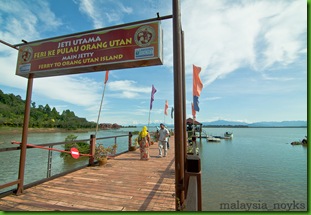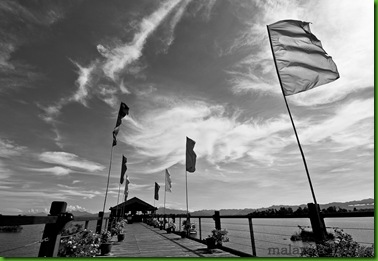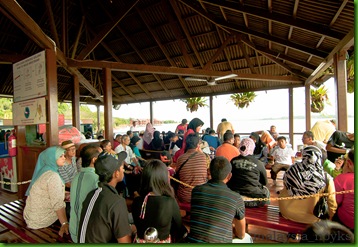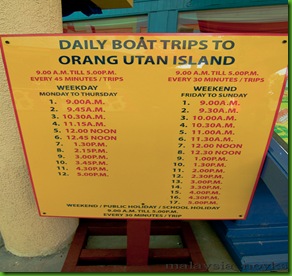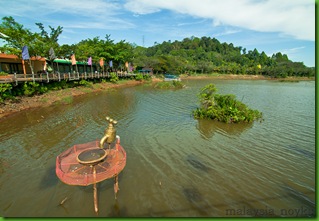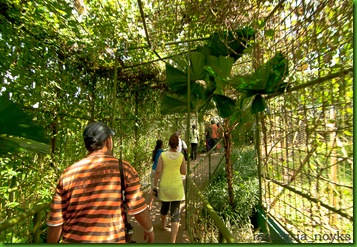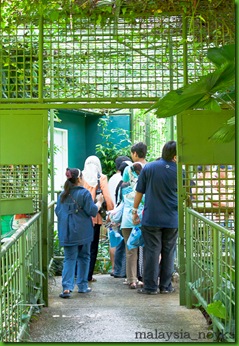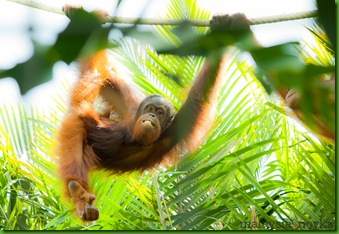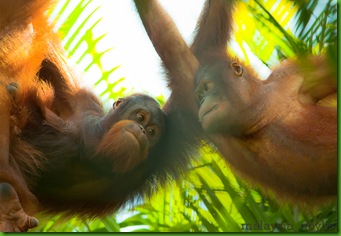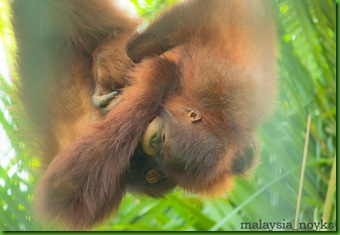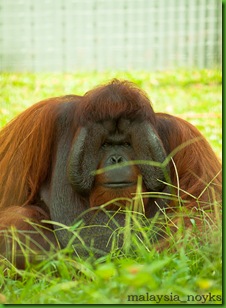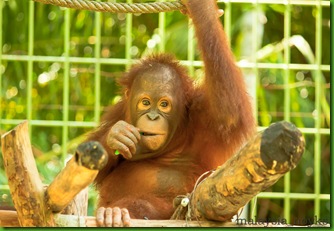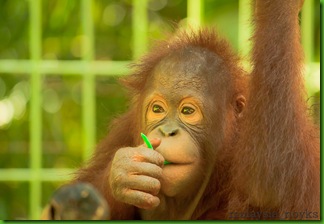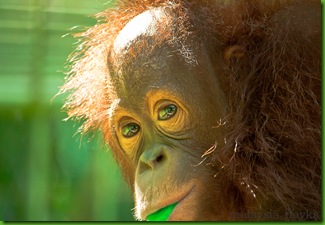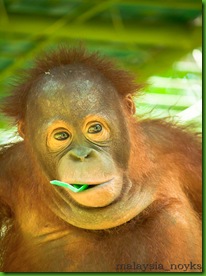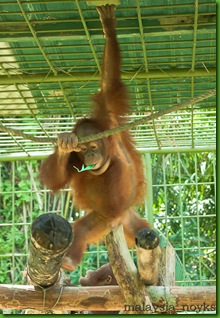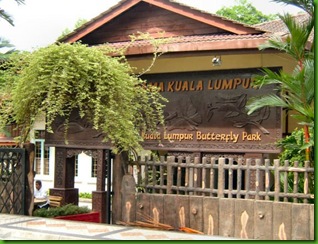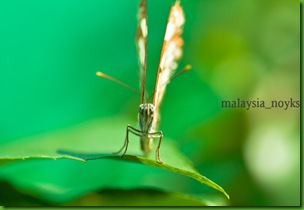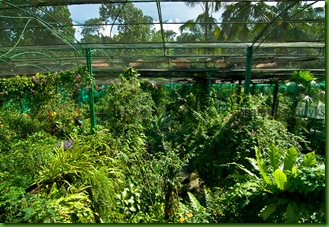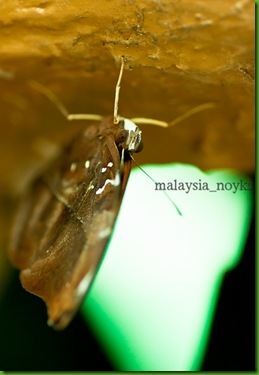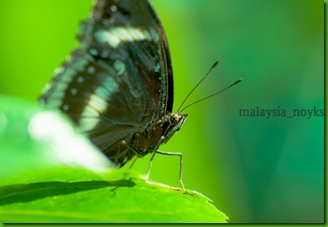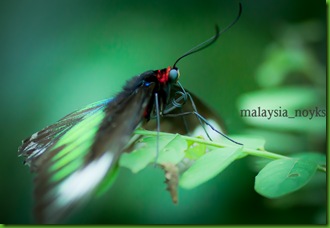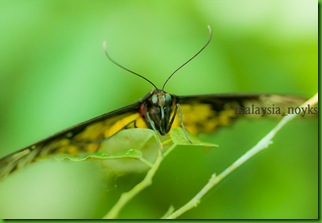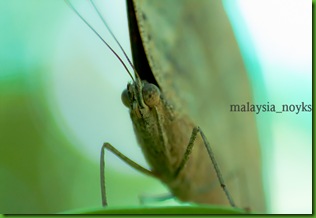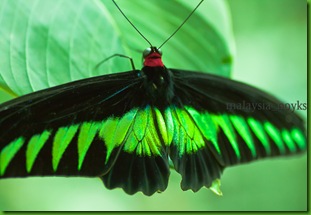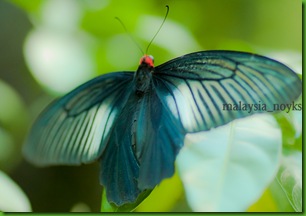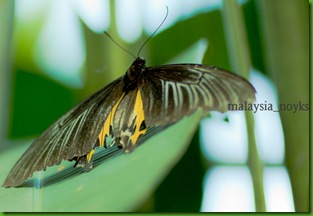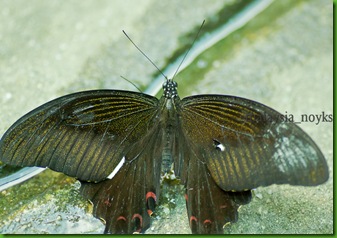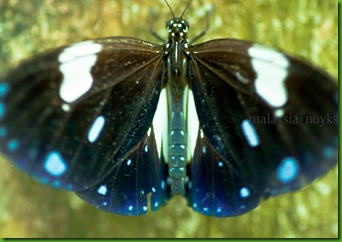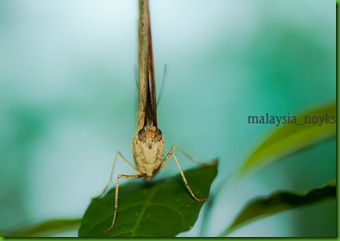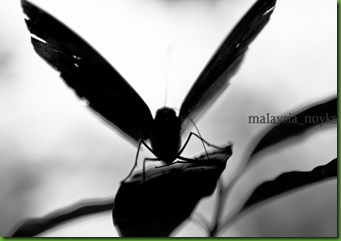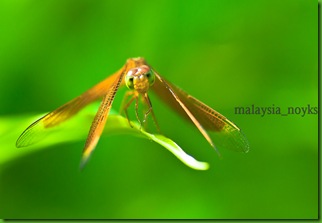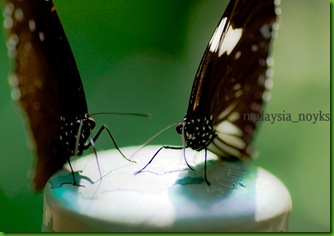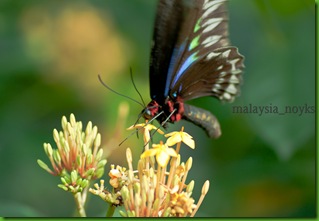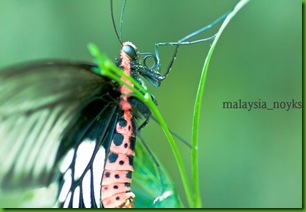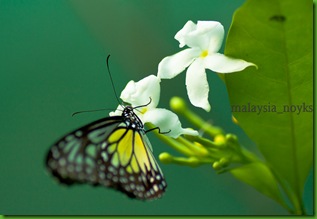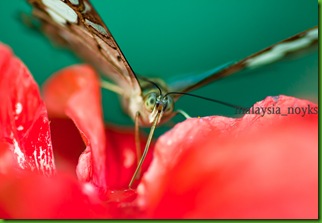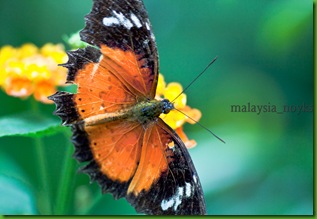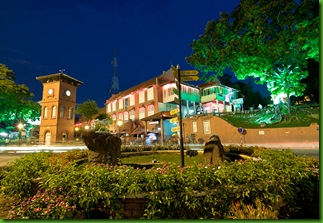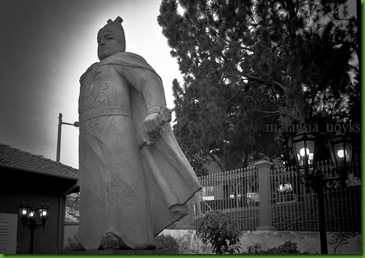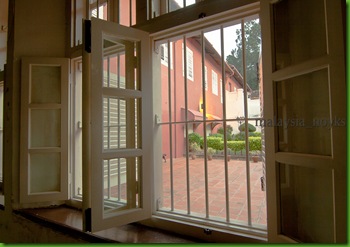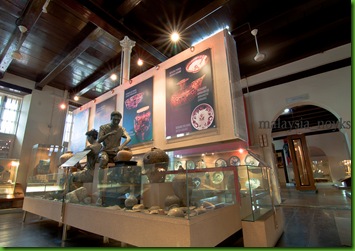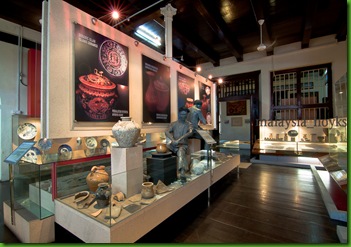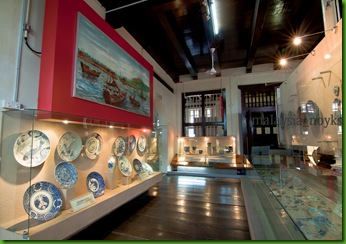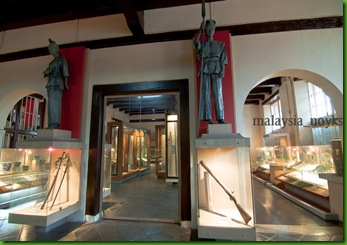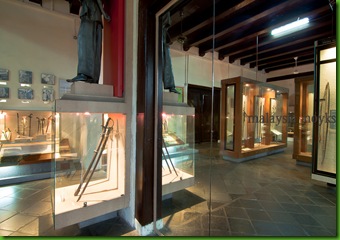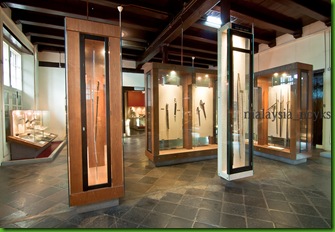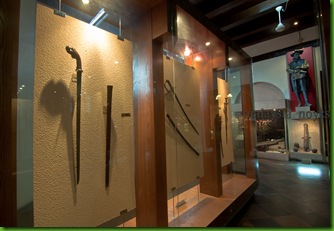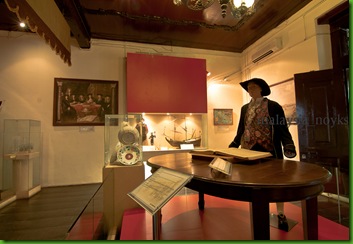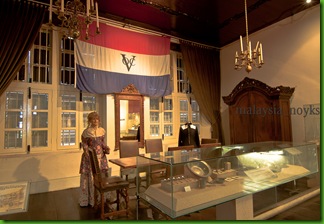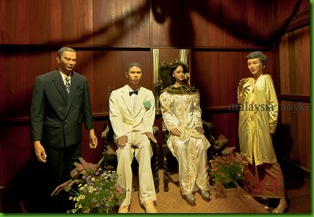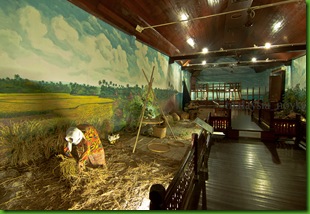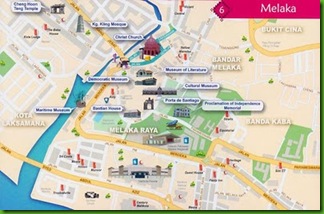The Bukit Merah Orang Utan Island Foundation is the driving force behind the island’s operations as well as its research centre’s main source of funding. The foundation’s main responsibilities include the setting up and maintenance of the island’s facilities, facilitating sponsorships and donations, organising orang utan infant relocation, displacement support, rehabilitation, and education programmes, in addition to collaborating with universities, government agencies, schools, charitable organisations and non-government organisations.
Before we reach the Orang Utan Island, we had go into Bukit Merah Laketown Resort to take a boat to the Orang Utan Island.
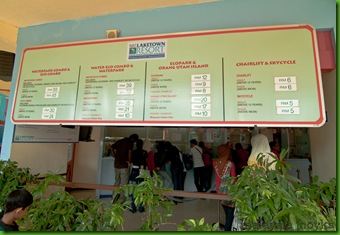 This is the counter to buy a ticket to the orang Utan Island...
This is the counter to buy a ticket to the orang Utan Island...
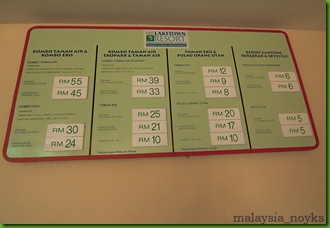 Anyway, there are different rate for different package to enjoy in the Bukit Merah Laketown including Orang Utan package, Combo Taman Air & Combo Eko, Combo Taman Air Ekopark & Taman Air, Taman Eko & Pulau Orang Utan and Kerusi Gantung Bergerak & Skycycle.
Anyway, there are different rate for different package to enjoy in the Bukit Merah Laketown including Orang Utan package, Combo Taman Air & Combo Eko, Combo Taman Air Ekopark & Taman Air, Taman Eko & Pulau Orang Utan and Kerusi Gantung Bergerak & Skycycle.
I select Taman Eko & Pulau Orang Utan which cost RM 12 per person.
The jetty used to travel us to Orang Utan island through a Huge lake.
A sunny day...
Visitor sit patiently in the jetty waiting for the boat..
Above : The schedule of the boat to and from Orang Utan Island.
At the side of the Jetty we can see so called "Floating Island", which can be viewed along the shore of the lake originated from the bigger island in the deeper surrounding of the 7000 acres lake. These miniature floating island are placed near to the jetty to create a natural landscape for the lake as well as using them as fish breeding areas. The island serve as protectors for the fish from the heat and predators. These become a sanctuary for the ducks to rest, nest and lay eggs.
 This is the boat used to travel visitors to the Orang Utan Island, it is slow but safe.
This is the boat used to travel visitors to the Orang Utan Island, it is slow but safe.
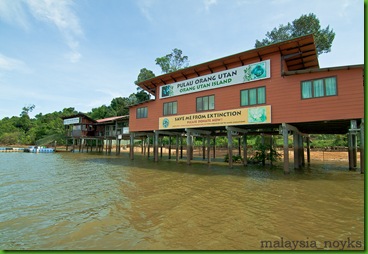 After 15 minutes, we reached the Orang Utan Island, it say "SAVE ME FROM EXTINCTION".... poor Orang Utan..
After 15 minutes, we reached the Orang Utan Island, it say "SAVE ME FROM EXTINCTION".... poor Orang Utan..
We were brought through the 100-metre steel-cage tunnel in the Orang Utan jungle/sanctuary which cover by the netting and iron bar... Seem like we are in the cage and the Orang Utans are watching the human from outside like zoo instead.. The purpose is to protect the Orang Utan from human disturbance and ran out to the jetty...
Beside that, there is a tour guide lead us through the walkway and explain to us regarding the Orang Utan.
Introduction of Orang Utan:
Orangutans are large apes that live in southeast Asia (on the islands of Borneo and Sumatra). These apes mostly live in trees (they are arboreal) and swing from branch to branch using their arms.
The word orangutan means "man of the forest" in the Malay language. As its habitats are being usurped by man, the orangutan's population is decreasing and it is in grave danger of extinction.
(1) Orangutans have a large, bulky body, a thick neck, very long, strong arms, short, bowed legs, and no tail. Orangutans are about 2/3 the size of the gorilla.
(2)They are mostly covered with long reddish-brown hair, has a large head with a prominent mouth area. Adult males have large cheek flaps (which get larger as the ape ages).
(3) Orangutans have senses very similar to ours, including hearing, sight, smell, taste, and touch.
(4) Orangutan hands are very much like ours; they have four long fingers plus an opposable thumb. Their feet have four long toes plus an opposable big toe. Orangutans can grasp things with both their hands and their feet. The largest males have an arm span of about 7.5 feet (2.3 m).
(5) Orangutans are omnivores (they eat both plants and animals) but are mostly herbivorous (plants comprise most of their diet). They eat fruit (their favourite food), leaves, seeds, tree bark, plant bulbs, tender plant shoots, and flowers. They also eat insects and small animals (like birds and small mammals).
(6) Orangutans are very intelligent. They have been known to use found objects as tools; for example, they use leaves as umbrellas to keep the rain from getting them wet. They also use leaves as cups to help them drink water.
(7) Orangutans are shy, solitary animals that are active during the day (they are diurnal). They live alone in large territories. This is probably due to their eating habits; they need a large area in order to get enough food and too many orangutans in one area might lead to starvation.
(8) Male orangutans are capable of very long, loud calls (called "long calls") that carry through forests for up to 0.6 mile (1 km). The "long call" is made up of a series of sounds followed by a bellow. These calls help the male claim his territory, call to females, and keep out intruding male orangutans. Males have a large throat sac that lets them make these loud calls.
(9) Orangutans can also walk using their legs (but rarely do). Orangutans do not swim.
(10) Orangutans live in Asia. They are the only great ape from Asia. They are found in tropical rain forests in northern Sumatra, Indonesia and in low-lying swamps in Borneo.
CLASSIFICATION
Orangutans belong to the:
- Kingdom Animalia (all animals)
- Phylum Chordata
- Subphylum Vertebrata (animals with backbones)
- Class Mammalia (warm-blooded animals with fur and mammary glands)
- Order Primates (which includes 11 families, which include lemurs, monkeys, marmosets, lesser apes, great apes, and humans)
- Family Pongidae (the great apes, including gorillas, chimpanzees, bonobos, and orangutans)
- Genus Pongo (gorillas and orangutans)
- Species pygmaeus
- Subspecies (perhaps a subspecies) P. p. pygmaeus (with a round face and dark red hair; found in Borneo)
- Subspecies (perhaps a subspecies) P. p. abelii (with a narrow face and paler hair; found in Sumatra)
(Source : http://www.enchantedlearning.com)
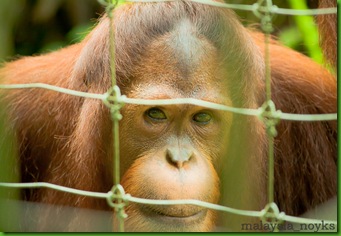 Above: the Orang Utans outside the iron bar.
Above: the Orang Utans outside the iron bar.
Above: Orangutans usually move by swinging from one branch to another; this is called brachiating.
Above: Meet the oldest orang utan (Big brother) in the Island. Orangutans live about 50 years in captivity, their life span in the wild is only 30-45 years.
At the end of the tunnel we're free to see a young oran utan without iron bar but with 3 feet away from it..
It has a crystal clear and shining bright eye...
Do you know what is it biting? It is a plastic spoon, I wonder why the authority will allow it to bite a plastic spoon? may be the orang utan grab and play it during feeding time.. I just worry it will get swollen..
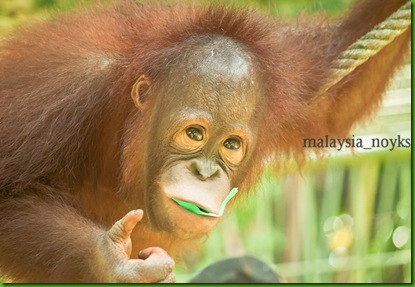 Above: This is the interesting part, during my photography to this young orang utan, It suddenly thumbs up!!! As if saying: "Nice shot! Good Job Man!" hooo... Can you see that?? The Orang Utan really like human...!
Above: This is the interesting part, during my photography to this young orang utan, It suddenly thumbs up!!! As if saying: "Nice shot! Good Job Man!" hooo... Can you see that?? The Orang Utan really like human...!
After the trip, I would like to say that: The Bukit Merah Orang Utan Island Foundation had done a good job on the conservation, breeding, and rehabilitation of Orang Utan to prevent their extinction. However, I think there are plenty of rooms for the Foundation for improvement especially provide more value added activities and programmes for the visitors to learn and understand more on the orang utan habitant and behaviour instead of bringing and briefing visitor around 15 minutes tour along iron tunnel.
Anyhow, I still enjoy the trip and open my eyes on the Orang Utan. Thanks.
